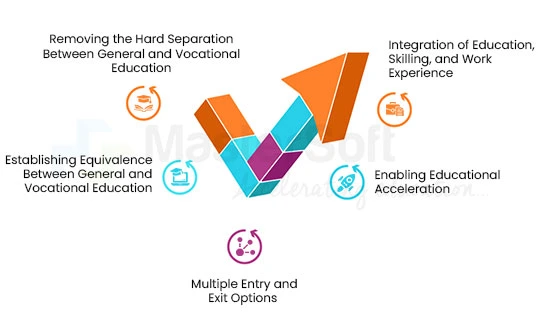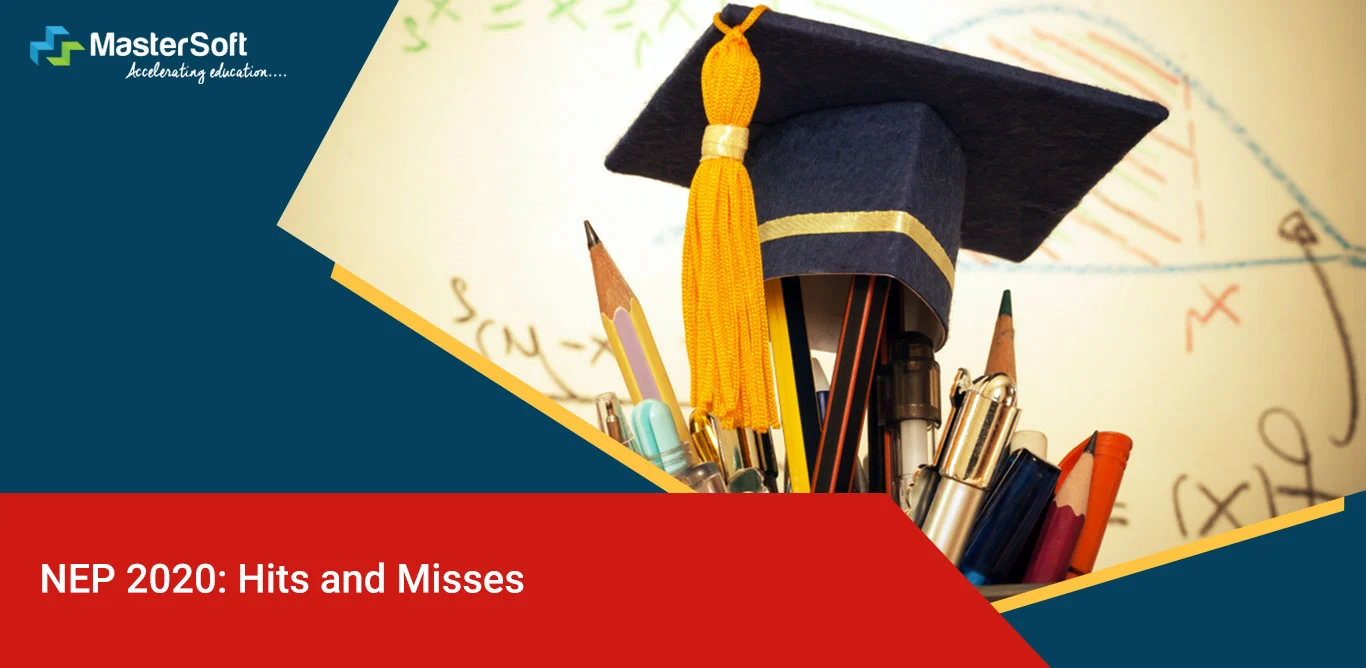04, Dec 2023
With more than 62 percent of its population being in the working age group (15–59 percent), India is one of the world’s youngest nations. Furthermore, 54 percent of its population is under the age of 25.
Therefore, it is essential to empower this demographic dividend through effective educational opportunities and strategic skilling endeavours. That is exactly what the National Educational Policy 2020 aspires to facilitate; the policy envisages equitable access to high-quality education for all students, irrespective of their socio-cultural and economic backgrounds.
One of the crucial steps towards that aim is through a credit rating system, which will help establish a self-directed and comprehensive education system.
National Education Policy 2020: All You Need To Know About NEP 2020 For Schools
What is the credit rating system?
The new educational policy emphasises the reconstruction of all aspects of the education system, including its governance and regulation. It focuses on the development of the creative potential of each student by strengthening their foundational capacities and fostering their social, emotional, and ethical capacities and dispositions.
To channel the intent and objectives of the policy, the National Credit Framework (NCRF) has been jointly developed by a high-level committee. This committee includes members from UGC, AICTE, NCVET, NIOS, CBSE, NCERT, the Department of School Education and Learning, the Department of Higher Education, the Ministry of Education, DGT, and the Ministry of Skill Development.
The framework will help establish a credit-based system, assisting in integrating credits earned through school education, higher education, and vocational and skill education.
Accordingly, all stakeholders have agreed that under the National Credit Framework (NCrF), the total notional learning hours for the assignment of credits across school education, higher education, and vocational education and training/skilling have been agreed to be 1200 hours per year (except for pre-school up to grade 5, wherein the learning hours range from 800 to 1000 hours), for which the students shall be awarded 40 credits.
Thus, 20 credits shall be awarded for a six-month semester with 600 notional learning hours.
The Purpose of NCRF in Credit Rating and NEP Compliance
The National Credit Framework (NCRF) will play a vital role in providing a holistic and comprehensive educational system. Additionally, its emphasis will lay on multidisciplinary, broad-based education. Also, it provides the following facilities:
- Provides liberal educational opportunities through flexibility in choices of courses.
- Encourages students to choose their own learning trajectories and programmes.
- It provides a sufficient student support system through mechanisms like educational acceleration for students with gifted learning abilities.
- Creditisation of experiential learning including relevant experience and professional levels acquired, based on the weightage for relevant experience and proficiency levels achieved, subject to assessment.
- One of the critical components of NEP compliance is the creditization of learning in various dimensions of academics, skilling and experiential learning. One single credit system will be operational through the Academic Credit System (ABC).
NCF 2020 (National Curriculum Framework - 2020) - A Complete Guide
How Will the Credit Rating System Benefit the Education System?

Removing the Hard Separation Between General and Vocational Education
The distinction between science, arts and commerce has been one of the most distinguishing features of the Indian education system. Additionally, the pronounced difference between general and vocational education has been prevalent for the longest time.
NEP 2020 envisions changing the outlook by highlighting the concept of holistic development, paying equal attention to students’ academic, social, emotional and physical progress. In addition, a distinguishing feature of secondary education includes no hard separation between arts, commerce and science.
Students will have the liberty to study an additional subject apart from their core programme or subject. For instance, if a student has biology or physics as a primary subject, he or she can opt to study an additional subject according to their preference. It could be from the same or different steam. This will help facilitate the following:
- It will help to create a student-centric learning approach.
- It will increase students' accountability.
- It will provide students with the choice to learn topics as per their interests.
- The proposed credit rating system will consider and calculate the learning hours that the learner puts in, regardless of the stream of education.
Establishing Equivalence Between General and Vocational Education
Equivalence relates to the level of education and the number of years of study accomplished in gradual progression according to a candidate’s field of study. Also, it relates to the evaluation of a curriculum and its compatibility with the national education system in terms of learning outcomes.
However, to establish such an equivalence, it is vital to have measurable criteria for each particular programme within general and vocational education and training/skills. This includes competencies and assessments via proper assessments, which is where a robust credit rating and framework prove to be instrumental.
In fact, the credit framework helps to assign measurable criteria for both general and vocational education and training and skilling. Also, the emphasis in this context is on the study of the content, duration, and achievement of the requisite competencies.
Furthermore, it allows for:
- Identify measurable outcomes through a well-thought-out assessment process.
- It will remove the need for equivalence certificates for academic programmes that meet the NCFR requirements.
- It facilitates interoperability, mobility, and the transfer of students between schools, boards, colleges, and universities.
- Empower students to pursue diverse learning experiences through varied skills, competencies, and learning avenues.
Multiple Entry and Exit Options
Quitting education in the middle of the year or towards the end of the year before the completion of the course is a common scenario. Many students opt to discontinue their education for various personal and professional reasons.
Nevertheless, many such candidates strive to resume academics once they have settled their issues but face challenges. NEP 2020 has considered the difficulties and has included multiple entry and exit options.
The credit rating system makes it possible for students to enter and exit the educational ecosystem. Besides, in such circumstances, they will receive credit weight based on their work experience or any other training that they undertook online or offline, subject to assessments.
Consequently, it will lead to greater validation of non-formal and formal learning, including open, distance, and remote learning formats.
Integration of Education, Skilling, and Work Experience
The traditional education approach is one-dimensional, which typically places more emphasis on attaining a degree than upskilling. The National Education Policy 2020 intends to change that by integrating education with skilling and work experience.
Therefore, the credit rating framework proposes a comprehensive and practical approach to incorporating aspects of learning, including academic education and upskilling. Additionally, higher educational institutes must strive to provide the following:
- Offer work-integrated learning programmes, allowing students to gain practical learning experiences while studying to develop their skills and knowledge.
- Creating appropriate learning opportunities to raise awareness and engage students in emerging technologies such as automation, AI (artificial intelligence), data analytics, robotics, etc.
- Preparing students by helping them learn the necessary skills to make them future-ready through practical experiences, industry collaboration, and leveraging technology.
- Industry-academic collaboration to provide students with the opportunity to engage and interact with industry experts.
Understanding NEP Compliance: A Comprehensive Guide
Enabling Educational Acceleration
The credit framework will also consider NEP compliance when addressing the educational acceleration of gifted students. Gifted students are those individuals who progress through the traditional curriculum faster than the normal pace.
Furthermore, within the broad principles of NCRF, the approach may extend to hackathons, olympiads, and students who show excellent performance in sports, fine arts, and other activities.
Specialised assessment methods are critical in this respect and have to be very strict, objective, above board, and adhere to high standards.
In Conclusion,
Closing the learning and skill gap through a wholesome education system is one of the major objectives of the new education policy 2020. On the other hand, the credit rating system complements the vision of the policy through the creditization of general and vocational education.
Connect With MasterSoft - Your One-Stop ICT Solutions Aligned With NEP 2020
Mobile: 08448010216
Email:info@mastersofterp.com













